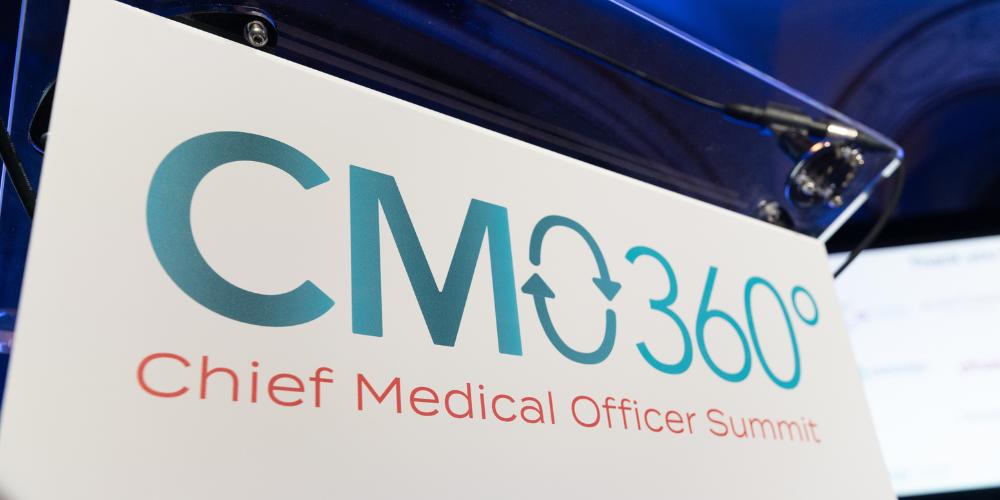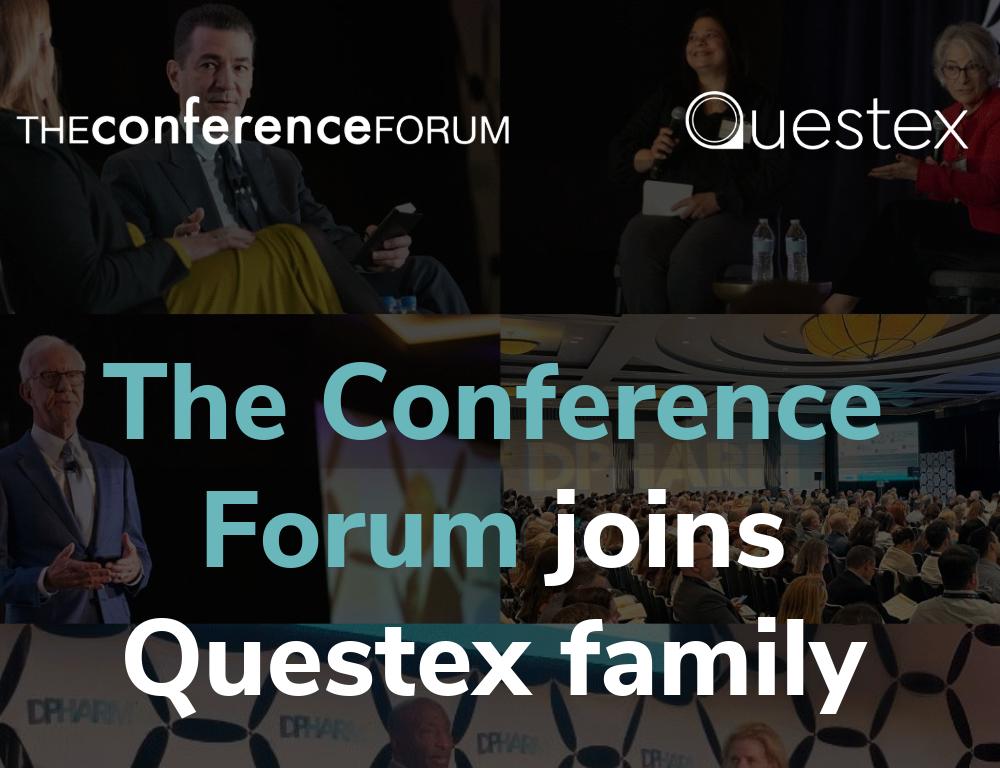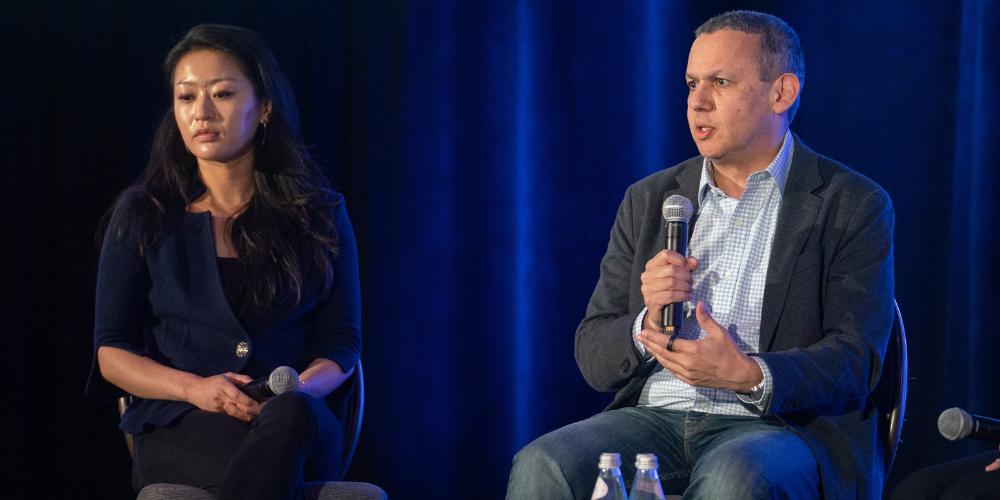
Karla MacDonald is the Chief Corporate Affairs Officer of Entrada Therapeutics.
Can you speak about your Communications experience?
I’ve worked across the biopharmaceutical industry with companies ranging from small, private biotech to
large pharma. I’ve spent the majority of my career at
Merck leading communications for the R&D division
and then international communications across their
ex-US markets as well as their corporate social responsibility investments. In doing so, I got to be involved in
all aspects of a global company – from the incredible
potential of strong R&D, to the challenges of regulatory
and commercialization across different markets.
After Merck, I joined Ipsen to help expand their North American presence. I had the opportunity to establish their communications and patient advocacy functions, which was just absolutely remarkable. The patient advocacy work really helped to underscore the importance of listening to and really taking the time to understand patient and caregiver needs and then sharing them back with the company in a way that can impact the way that we are developing therapies – and even more broadly, running the business. You really need the patient perspective at the table and when it happens, it’s amazing to see how everyone thinks differently. About a year ago, I joined Entrada and I’m excited to leverage my past experiences to convey Entrada’s vision of developing and delivering a new class of medicines to treat devastating diseases utilizing our EEV platform.
How do you think about Communications?
I was always interested in social dynamics and understanding how people tick. Communications is a natural extension of that interest. To communicate effectively, you have to really understand the audience with whom you want to communicate and share the information in a way that can be received and understood.
I’ve been in the biotech industry for more than 20 years; the entire time has been in a version of corporate affairs: investor relations, corporate communications, patient advocacy and government affairs. And they all share a common set of skills – I call it my toolbox. You need to be able to learn about and understand different audiences, clearly share a credible and authentic story, and actively manage your relationships – both inside and outside of the organization. As leaders, we are representing our companies (at all times), and we need to really understand and feel comfortable talking about its culture, values, strategy and progress. It’s our role to bring it all together.
How is the communications strategy different between large pharma and emerging biotech?
It’s more about scope and the importance of prioritization.
I went from Merck (with approximately 70,000 employees)
and Ipsen (with approximately 7,000 employees) where I had significant size teams to Entrada where I’m a team of one. And when I started at Entrada, there were about
70 of us. Obviously, I can’t do everything as quickly as I’d
want to do it. So, there is a lot of prioritization that needs to
happen. And that all starts with the mission and strategy:
Why are we communicating, to whom, and what’s the
purpose? And importantly, how does it advance our
strategy? That clarity enables me to really focus on those
activities that will have the greatest impact for patients and
our company.
One of the things I really like about small companies is that it’s easier to be authentic. Strong communications and strong cultures happen when you are authentic and are hitting the right tones. In a small – and especially pre-commercial – space, there is an opportunity to be more rapid and less formal because you don’t need to go through the big company review process. While review processes are critical, small companies have a bit more flexibility and that leads to the messages coming out more closely to their original intention. My goal is for people to feel that there is an actual person behind every message (rather than a review team).
How do you determine tone and project authenticity based on your audience?
The key to great communications is to start with a great organizational story, a great culture and a great leadership team. Then you look at how you can best share those attributes authentically with your audiences. There have been situations in my career where people were hoping for a specific result from communications. But if your organization doesn’t have a strong vision or strategy or if you can’t project those attributes appropriately, the communications will always fall short.
"Nowadays, people aren’t sitting around waiting for a press release. They are looking to engage with leaders authentically."
How can CMOs best support the communications colleagues?
There is “big C” Communications and “little c” communications. Big C Communications are managed or governed by the communications professionals in an organization. Those are the larger stories sharing corporate milestones or developing brand awareness or brand identity. Those are managed centrally, and we will look to the CMO for thought leadership. That could be panels and presentations, quotes for press releases or corporate materials and participation in social media. What makes a strong difference with the CMO is when they also focus on small c communications. That includes the work they do with their natural networks and social media. Nowadays, people aren’t sitting around waiting for a press release. They are looking to engage with leaders authentically.
It’s important for CMOs to have a presence both inside and outside their companies. From inside their companies, how are you building engagement with your employees? Are you making sure the organization understands the role of the CMO and their departments? I recommend that leaders have what I call a “walking around deck.” A short deck of maybe five slides that helps to explain what you do and how you and your team support the mission and advance the strategy. This could include: an overview of the CMOs function, your team, and how you link together with other functions within the company, as well as groups outside the company.
It’s important to find opportunities to stay visible and relevant. This could include sharing your perspective on company progress or external industry changes/ advances with internal teams. While everyone at the company is responsible for being patient-centric, the CMO has an additional responsibility to bring that unique patient or physician/KOL experience. Also, since COVID, I think employees look to their CMO to provide leadership in talking about employee health and mental health.
The advice is somewhat similar around external communications. You should seek out opportunities to share your perspective on company progress, therapeutic advances, or external industry changes/advances with external audiences. CMOs should think about whether they are participating on the right panels, rather than participating just to check a box. For example, can you be a real thought leader and use your experiences to uniquely inform or advance the discussion? Being active on social media is always welcomed, but it’s not a one and done activity. It has to be nurtured to create a following. People are looking to leaders to be authentic and bring new perspectives about their areas of expertise and their leadership.
At Ipsen you were responsible for both communications and patient advocacy. Can you speak to the overlap of those roles?
I loved doing patient advocacy at Ipsen because I think everyone in a company should be a patient advocate. We become advocates both by learning about the specific patient populations we serve as well as through our own experiences as patients. This should lead us to better thinking about how we discover and develop drugs. Patient advocacy is about inclusion and storytelling. It’s about bringing the patient voice to our community and taking action based on what we learn.
The communications role is highly strategic and interwoven throughout the fiber of a company. A good communications person isn’t just sitting in a particular swim lane and writing content. A good communications person sits at the strategic table and helps make decisions by understanding legal, finance, HR issues, clinical, basic research and manufacturing in order to tell the company story and manage the external brand. Being responsible for patient advocacy means that I bring that perspective to the strategic table.
The other piece is that, as a company, we need to listen to and learn from patients. We also need to be aware of the patient as part of the audience. Oftentimes, press releases are focused on an investor audience. But patients are also reading press releases. We need to write press releases that are accessible to non-investor audiences and also satisfy patient expectations. We need to balance the need to talk with investors about the potential power of our technologies with the awareness that patients are looking to our industry for hope. When the communications person is heavily involved in patient advocacy, it gives an opportunity to prioritize that audience within the fiber of the organization.
It sounds like there is a lot more blurring of lines between audiences.
Absolutely. When you go to an investor conference, there are non-investors attending. When you go to a scientific conference, there are patient advocates and investors. And when you go to patient advocacy meetings you will meet other scientists and investors. You can’t segment audiences the way you could ten years ago. We need to look at our activities much more holistically.
The other part that you can’t segment anymore is internal versus external. In the “olden days,” if you wrote an internal communication, only your employees would see it. Now you have to assume that anything you share internally will be shared externally. Likewise, posting externally on LinkedIn, for example, might be more effective in getting the attention of your colleagues than sending an email to their inbox.
How do you package a message differently based on the medium?
For the CMO of a public company, you need to be aware that everybody is listening to everything you say. As a result, you need to be careful not to share information that has not been publicly disclosed. I recommend CMOs check in with their communications colleagues to make sure they are aware of what is already in the public domain and understand what is appropriate to share. And, when communications are being developed you’re helping inform them. For example, when we go to scientific meetings, we gather our teams to go over what the conference is about, the audience, the data we’re presenting, and how to reply to anticipated questions.
"As CMO, you need a solid grasp on the patient experience, the market potential, and the competitive landscape, including the data."
In your experience, how can CMOs differentiate their companies or assets from the rest of the market?
Your strategy needs to differentiate you. If your corporate strategy can’t differentiate you, your CMO won’t be able to. You need to communicate based on what’s there. The CMO has to demonstrate that they understand the patient, prescriber and KOL perspectives. And they need to bring unique contributions to the discussion as a result of those relationships or interactions.
It is quite common for us to meet with an investor or analyst and they ask us very specific questions about how patients respond or feel about a technology. As CMO, you need a solid grasp on the patient experience, the market potential, and the competitive landscape, including the data. There is a bit of an overlap between the CMO and CSO in terms of your ability to understand the fundamental science behind your programs. Understanding the market determinants is also important.
Where and how can CMOs learn to communicate more effectively?
On your LinkedIn or Twitter feeds, find CMOs or leaders you think communicate effectively and follow them. Try to create some diversity in your social media feed. At one point I looked through my social media feed and it included a lot of people like me, which was great because I was staying in touch with folks I knew, but I wasn’t learning and growing. Since then, I’ve made a deliberate attempt to follow many more patients, disability activists, Black physicians and leaders, people from Indigenous communities and thought leaders from the LGBTQ+ community. This has challenged my approach to communication and has helped to educate me on issues impacting communities that I may not be a part of.
If you are a CMO, spend some time with your corporate communications person. Share your team’s objectives to see how they weave together. There is a lot of overlap and opportunity, especially as the CMO is the key contact with KOLs. Maybe we can leverage those KOLs internally to talk with our employees and externally as we share our science with others.
Anything else?
Don’t be afraid to be a thought leader. You are in a unique position as a leader and physician in the biotech industry. Don’t be afraid of social media. It is a very powerful tool to create better access and understanding of what we do.







